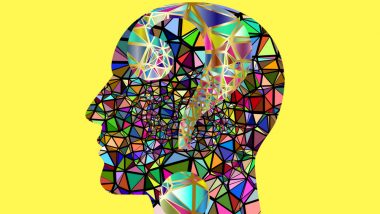On the outset, there’s nothing remotely common between Nobel-prize winning mathematician John Nash and Indian actress Parveen Babi. But their nationality, race and profession notwithstanding, both suffered from paranoid schizophrenia which eventually made recluses of them. Schizophrenia is a mental illness, with a prevalence rate of 1.1 percent of the population above the age of 18. Today, there are over 50 million people suffering from schizophrenia all over the world.
It’s one of the most frightening of all mental illnesses, which can understandably create anxiety in healthcare professionals and the general public. But despite the scary image of schizophrenia perpetuated by the media, it is a treatable disease. Although there’s no cure for schizophrenia, it responds very well to antipsychotic medications and psyhco-social therapies. Today, on May 24th, we observe World Schizophrenia Day to create awareness about the disease and to let the world know that the dreaded mental illness can be treatable with medicines and therapy.
What Is Schizophrenia?
The term ‘schizophrenia’ is derived from modern Latin, which literally means “a splitting of the mind” and was coined in 1910 by Swiss psychiatrist Dr. Paul Eugen Bleuler. It alludes to the disconnection created by the “splitting” of the psychic functions. Unfortunately, the name also adds to the confusion, because people commonly confused schizophrenia with a split personality.
What Are the Symptoms of Schizophrenia?
Early Signs
Schizophrenia begins in early adulthood, typically between the ages 15 and 25. Early symptoms include sleep problems, irritability, cognitive impairment, social withdrawal and isolation, change in the manner of speaking, paranoia and suspicions.
Hallucinations
People with schizophrenia suffer from hallucinations of touch, smell, taste, vision or hearing. Auditory hallucinations – wherein they hear sounds that abuse or criticise them – are the commonest. That’s why they have a hard time differentiating reality from hallucinations.
Delusions
People with schizophrenia also hold false beliefs or delusions that may sound outrageous to others around them. These delusions are often centred on themselves. They start fearing persecution, where patients think they are victims of some form of threat or conspiracy. They may think that an external power of person is monitoring their thoughts or actions. They may also develop delusions of grandiosity or a sexual and religious nature.
Thought Disorder
Patients often speak in a distorted or illogical manner, which can confuse those around them. One of the signs of schizophrenia is that the person fails to use language logically or coherently. In psychiatric parlance, their thoughts are described as “knight’s move.” Like the knight in a game of chess, their thoughts proceed in one direction, but can suddenly go off at right angles without a logical chain of thought.
What Are the Types of Schizophrenia?
Paranoid Schizophrenia
Paranoia, delusions and hallucinations characterise this type of schizophrenia.
Hebephrenic Schizophrenia
In this type of schizophrenia, the person exhibits bizarre behaviour. The patient’s speech is illogical, and their thoughts are disordered.
Catatonic Schizophrenia
Those suffering from catatonic schizophrenia exhibit catatonic behaviour, which includes rigidity of body, catalepsy or unusual posturing of the body, mutism or limited speech, stupor or no physical activity, stereotypy where they repeat the same movements over and over again or echolalia where they parrot somebody else’s speech.
Simple Schizophrenia
In this type, patients go through mild and non-psychotic emotional problems. They suffer from a considerable loss of personal drive, which makes them unmotivated. They may suffer from mood swings, showcase emotional disturbances and have poor personal hygiene.
Who Is at Risk?
Age
Schizophrenia starts in early adulthood or late adolescence, typically between the ages of 15 to 28.
Gender
Men have an earlier onset age than women. They also tend to suffer from a more severe form of the disease with more negative symptoms, less chance of a full recovery and a worse outcome. Men also have a higher risk of suffering from the illness than women.
Urban Dwellers
Schizophrenia is seen more in people born in cities. The larger the city and longer the person has lived there, higher the risk.
Migrants
People who have migrated to a new country or a place are more at risk of suffering from schizophrenia.
What Are the Causes of Schizophrenia?
Exact causes of schizophrenia are still not known to medical science. Research shows it could be caused by a combination of factors, which includes genetics, imbalance of dopamine and serotonin, environment and drug abuse.
Genes
The greatest risk factor of schizophrenia is a positive family history. In the general population, the lifetime risk of the disease is just below one percent. In the first degree relatives of patients, it is 6.5 percent. The heritability of schizophrenia is 80 percent according to a 2016 study. If one parent suffers from the condition, the probability that it will be passed down to the child is 13 percent. If it is present in both parents, the risk will be more than 20 percent!
Complications in Pregnancy
Certain obstetric complications like premature birth, low birth weight and lack of oxygen during the time of birth increase the risk. People born in late winters and early spring are also more likely to have schizophrenia. Exposure to virus while in the uterus is also a cause.
Environmental
Environmental hazards that have a subtle effect on brain development also increase schizophrenia risk. Social isolation, migrant status and urban life act as stressors. Through parenting styles don’t seem to have an effect, families do play a big part in the course of the illness. Patients with supportive parents do better than those with hostile, abusive ones.
Drug Abuse
Stimulants like cocaine and amphetamines can cause effects similar to paranoid schizophrenia. Recent reports suggest that cannabis or weed use can increase future risk of cannabis, four times!
How Is Schizophrenia Treated?
Despite schizophrenia being a serious illness, not many people know that it responds well to treatment. Antipsychotic drugs and psychological counselling help individuals with schizophrenia lead normal, productive lives.
Medicines
Antipsychotic medicines: Risperidone, Olanzapine, Quetiapine, Ziprasidone, Clozapine and Haloperidol are the primary treatment methods.
Psychosocial treatments
Psychosocial treatments help the patients learn coping skills to deal with the challenges posed by their illness. It helps them achieve everyday goals attending work or school, which are usually impaired due a lack of motivation. People who attend psychological counselling are also less likely to experience a relapse.
The only impediment that stops patients from leading healthy and productive lives is lack of awareness about treatment. An early diagnosis and treatment will benefit the patients greatly because research suggests that longer the time taken to address the problem, worse the outcome. That’s why World Schizophrenia Day is observed with the view to educate people about early diagnosis and treatment.
(Reference: Schizophrenia, BMJ)
(The above story first appeared on LatestLY on May 24, 2018 11:53 AM IST. For more news and updates on politics, world, sports, entertainment and lifestyle, log on to our website latestly.com).













 Quickly
Quickly


